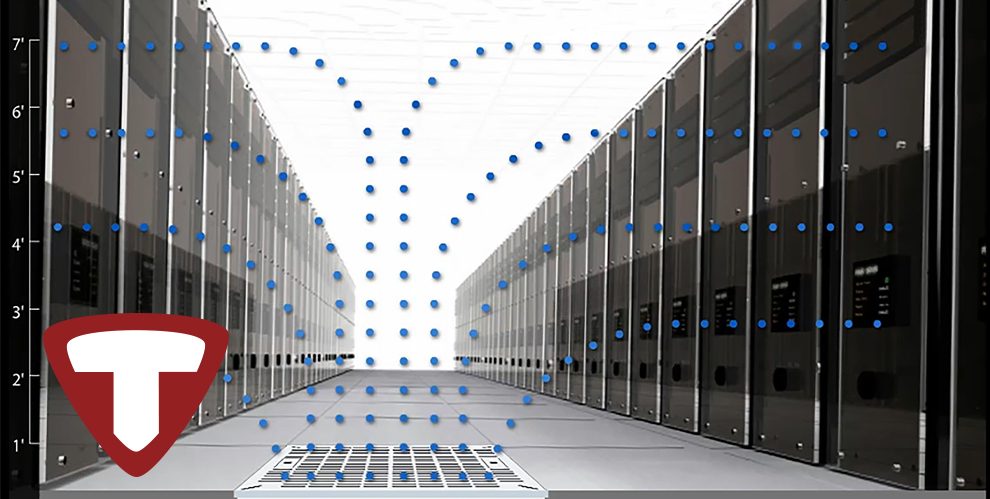Cutting Power Costs in The Data Center
 The objective for every data center facility manager, other than ensuring that the required servers are up and running, is to reduce costs and improve efficiency. We all hear a lot about monitoring products that provide visibility to critical conditions and equipment allowing timely resolution of issues before they result in downtime. So, let’s focus on a different type of monitoring – one that focuses on improved efficiency, resulting in power cost reduction.
The objective for every data center facility manager, other than ensuring that the required servers are up and running, is to reduce costs and improve efficiency. We all hear a lot about monitoring products that provide visibility to critical conditions and equipment allowing timely resolution of issues before they result in downtime. So, let’s focus on a different type of monitoring – one that focuses on improved efficiency, resulting in power cost reduction.
The Low Hanging Fruit
Aside from equipment costs, the highest ongoing expense in the data center is the cost of power. Most of the power used in a data center is consumed by two categories of machinery: servers and cooling equipment. The cost of power required by servers is fairly fixed. Aside from replacing your servers with more efficient ones, there is not much that can be done to reduce the power load they require. The low hanging fruit for power reduction then becomes the cost of the power needed for cooling. We can see this trend in the upturn of data center builds in climates that are better suited for cooling, allowing outside air to be used in the process. Unfortunately, not everyone is able to relocate to Ireland or a barge in the Pacific Ocean. So, what can be done to reduce the power needed for cooling in an existing site?
Ensuring that cooled air is used for cooling and exhaust air is routed back to be re-cooled is an easy place to start. Any gaps should be plugged to prevent hot air and cold air from mixing. Blanking panels should be used to prevent cold air from bypassing the servers altogether and should be used to fill every open space in server cabinets. Brushed grommets, cable cutout pass-throughs, and sealing foam should be used to plug any holes or gaps that may allow air to flow where it shouldn’t be flowing.
Considerations for Aisle Containment
If cooled air and exhaust air is mixing around the end of the cabinet rows or over the top of the cabinets, then a hot aisle or cold aisle containment might be the best solution. Aisle containment will prevent air from mixing, resulting in more efficient cooling because cooling units will not need to work as hard. Lower fan speeds equate to lower power requirements and less stress on the equipment which results in longer equipment life and less maintenance.
There are quite a few considerations and paths that can be taken when looking at containment systems. Containment solutions can get pricey and the additional costs for modifications when making changes or building out white space are ongoing. Fire codes also play a role in containment. Systems need to allow a fire suppression system to function in the event of a fire.
Increasing Data Center Temperature Is a Viable Option
Adjusting the temperatures used for cooling servers is certainly another good option. By increasing the temperature in the data center, less cooling is required. If you are considering this option it is imperative to incorporate comprehensive temperature monitoring to quickly identify emerging issues in your data center environment.
ASHRAE (The American Society of Heating, Refrigerating and Air-Conditioning Engineers) recommends having temperature sensors installed high, low, and in the middle of both the front and back of every cabinet. If you have unlimited resources this certainly would be the best practice. However, monitoring the exhaust temperatures is not nearly as important as monitoring the temperatures in the front of the severs at the sever intake; cutting the costs in half. Let’s consider for a moment the cost of wiring all those sensors. That requires a lot of time and copper. This would make the most cost-effective solution a wireless solution. Once adequate wireless temperature monitoring is in place then the option of raising temperatures in the data center is much more viable.
Create Turbulence to Create A Better Spread
Last, but certainly not least, if you have raised floors make sure that you are using the most effective airflow panels to ensure you are maximizing your cooling. Not all perforated panels are created equal. Traditional airflow panels will create a column of air that may bypass the cabinets and server intakes altogether. This means turning up the fan speeds won’t necessarily create better cooling conditions.
RLE’s Triad panels feature unique, patented directional fins that create turbulence to create a better spread, or plume, of cool air. This allows more of the cooled air to reach the server intakes. Studies show that replacing standard perforated panels with Triad perforated panels can improve cooling throughout the entire rack, including the top. This can result in not needing as much cooled air, lower fan speeds, along with all the additional benefits that lower fan speeds provide.
There are numerous “best practices” when looking to improve efficiency. Fortunately, RLE Technologies can provide several solutions that can help you to achieve your goal!
Leave a Reply

